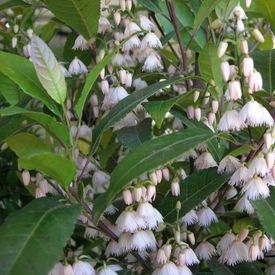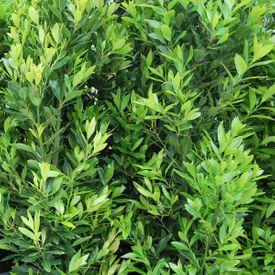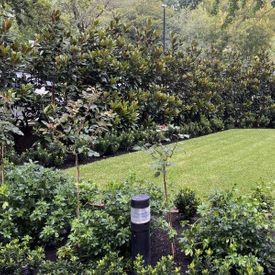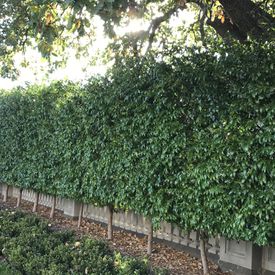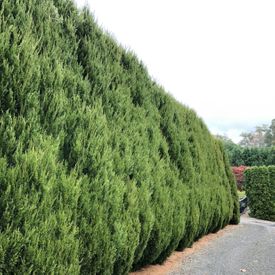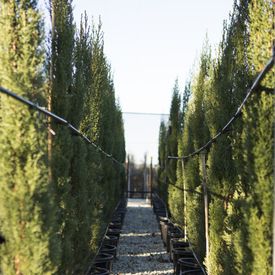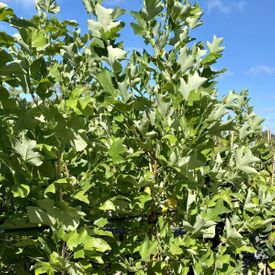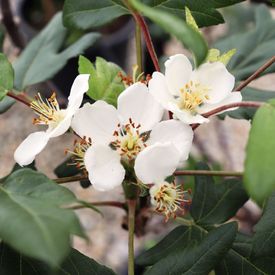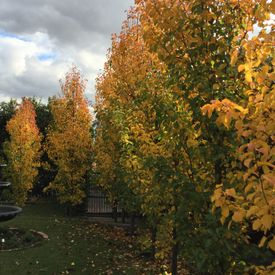Plant What Where | Screening For Privacy
PLANT WHAT WHERE | Screening For Privacy
As modern cities evolve, homes are becoming smaller, closer, and often overlooked by one or more neighbours. Privacy screening is becoming a major issue for landscapers, as homeowners seek to create a personal space in which to enjoy their leisure time.
While selecting for height is usually the main focus, equally important is what is happening below the ground. With smaller house blocks come smaller garden beds, greater proximity to homes and structures (both the client’s and their neighbours), and tighter spaces in which to work.
Key considerations for selecting appropriate screening plants include:
• How big does the mature plant grow, and how big is the root system?
• What water and nutrition will this plant require?
• Does it need any ongoing maintenance, will there be access for pruning?
Deciduous screening trees can add visual interest to the garden throughout the year as leaves change colour, and eventually drop off. They have the advantage of letting in light during the Winter months (which can be important if planted near windows), but may not be as effective as privacy screens during that period.
Plant Selections:
MEDIUM TO LARGE SHRUBS & SCREENING
Elaeocarpus reticulatus
A beautiful evergreen native tall shrub/small tree with dense green foliage and masses of pink bell-shaped, aniseed-scented flowers that display in Spring/Summer. Small colourful blue berries follow which attract a range of native birds. Its dense green foliage and upright narrow growth habit make it ideal for screening.
Laurus nobilis
Bay trees make excellent screens thanks to their dense, deep green, aromatic foliage that looks great all year round. They are hardy growers, capable of withstanding extremes in weather. Being drought and salt tolerant means they are also an excellent choice for coastal areas.
Magnolia grandiflora 'Sweet Carolina' pbr
A superbly handsome evergreen tree with feature foliage maturing from light new burgundy growth in spring to glossy dark green with velvet copper undersides. It’s heavily perfumed white flowers bloom from spring to summer and can grow to 25cm in diameter.
Waterhousea floribunda ‘Warners Selection’
This very popular Australian native Lillypilly that is ideal for a dense screen. Its lush foliage looks good all year and will add richness to any garden design. Maintenance is the key. Prune to desired height two to three times per year to maintain a bushy screen and restrict root growth.
CONIFERS
Juniper 'Spartan'
This upright, compact conifer with beautiful, dense, deep green foliage responds to clipping, and makes an excellent dense screen. Can be used in a variety of garden styles.
Cupressus glauca
This slender growing Italian pencil pine features aromatic blue-green foliage, and makes an interesting visual effect when planted along fences.
Ginkgo biloba 'Lemonlime Spire' pbr
Glowing lemon-yellow autumn colour follows bright lime-green summer leaves. This strongly columnar form is well suited to formal garden styles but is equally at home in a mixed planting where it provides a stunning contrasting vertical accent.
Liriodendron tulipifera Fastigiatum
Being more upright and narrow than wide, Liriodendron make a magnificent screening tree. The fastigiate nature will develop into a tear drop shape as the tree matures. As the name suggests "the Tulip Tree" will bloom with large yellow-green flowers from late spring. Summer will see lime green foliage turning to golden yellow in autumn.
Malus trilobata
This flowering crab apple grows to 4.5-5 metres, with an upright, conical shape. Features broad maple-shaped green leaves that turn yellow with burgundy tints in autumn. Features abundant large, white flowers often with a delicate pink tinge near the yellow stamens through Spring, making it a striking selection.
Pyrus calleryana ‘Capital’
This fastigiate variant has a narrow and columnar growth habit making it suitable for screening in areas with limited space. Dark green leaves turn a reddish-purple in autumn. Masses of small white flowers bloom during Spring. Minimise exposure to strong winds.
Pyrus calleryana ‘Cleveland Select’
A narrow pyramidal tree with a dense growth habit and attractive symetrical branching. Produces brilliant orange/red foliage during Autumn, followed by white flowers in Spring. This medium deciduous tree is capable of tolerating a range of soil conditions.
Pyrus calleryana 'Cleveland Select'
For more inspiration:


